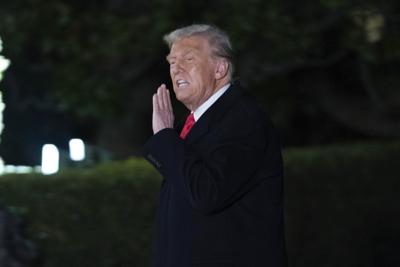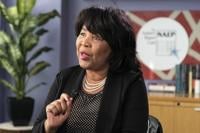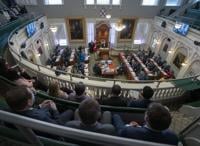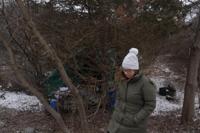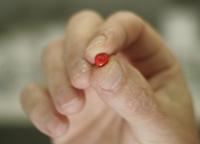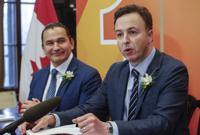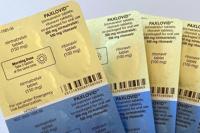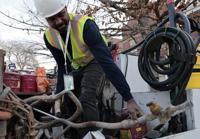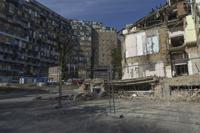Scientists warn the Trump administration’s drastic cuts for medical research endanger patients, will cost thousands of jobs – and threaten America’s standing as a world leader in science and innovation.
Nearly two dozen states sued Monday to block the ��ɫtv Institutes of Health’s surprise slashing of billions of dollars in medical research around the country, calling it a “devastating” blow. Later Monday, a federal judge in Massachusetts temporarily blocked the cuts from taking effect, setting a hearing for later this month to settle whether they are legal and should proceed.
“If you’ve ever wished for a cure, for better treatment options for yourself or a loved one, this should feel personal,” said Rhode Island Attorney General Peter Neronha.
While the are tackled in court, universities, hospitals and other research groups are reeling as they try to figure out how to handle the sudden loss of funding.
“It’s my life’s work – it’s the life’s work of my team, the promises we have made to the hundreds of patients that I care for,” said Dr. Nandakumar Narayanan, a University of Iowa neurologist who treats Parkinson’s patients while also researching treatments for the incurable disease.
If the cuts are enacted, Narayanan said, his university and its hospital – one of Iowa’s top employers – will lose “tens of millions of dollars, people will have to lose their jobs, the research enterprise will grind to a halt.”
At issue: The NIH, the largest funder of biomedical research, said it was cutting what are called “indirect costs” for research institutions that receive its grants – such things as support staff, hazardous waste disposal and the electricity needed to operate sophisticated machinery.
What the Trump administration’s announcement dismissed as “overhead” that would cut $4 billion a year is what the government and scientific organizations that have relied on it for decades say is key to doing research. Depending on the size of the research institution and the complexity of its work, some places receive 50% or more of the amount of any NIH research grant to put toward those costs – but the new order would cap that at 15%.
As an example of the impact, Monday’s lawsuit said the University of Washington's medical school in Seattle could lose $90 million to $110 million in funding – and that might mean having to scale back ongoing clinical trials involving a list of diseases from Alzheimer’s to childhood cancer.
The states' lawsuit said implementing the 15% cap would “mean the abrupt loss of hundreds of millions of dollars that are already committed to employing tens of thousands of researchers and other workers, putting a halt to countless life-saving health research and cutting-edge technology initiatives.”
A Republican lawmaker spoke out, too. Sen. Susan Collins of Maine, who chairs the Senate Appropriations Committee, called the cuts arbitrary and a “poorly conceived directive.” In a statement, she said she called Robert F. Kennedy Jr., the nominee for health secretary who would oversee agencies including NIH, who promised that if confirmed he’d reexamine the measure.
U.S. district court judge Angel Kelley scheduled a hearing on the case for Feb. 21. The Trump administration did not respond immediately to a request for comment.
The NIH gave out about $35 billion in grants last year: Scientists submit research proposals that are vetted by expert committees to determine their importance. The total grant for each project is divided into “direct” costs – things like the researchers’ salaries and cost of laboratory supplies – and “indirect” costs, the administrative and facility costs needed to support that work.
“You need electricity, you need water, you need hazardous waste disposal, you need IT security, you need building security,” said Dr. Elena Fuentes-Afflick, chief scientific officer of the Association of American Medical Colleges.
Sure, research labs already have basics like water and electricity – but the costs are shared by the different projects that use them. Labs that handle dangerous viruses, for example, require special safety precautions that are much more expensive than other types of research and thus those grants would have higher supporting costs to cover their institution’s extra expenses, explained Research!America president and CEO Mary Woolley, a nonprofit research advocacy group.
“Imagine you’re funding a concert. Direct costs would be like paying for the musicians and their instruments. Indirect costs would be the venue, the sound system, the people who manage the event — all essential, but often invisible to the audience,” said Dr. Harlan Krumholz of Yale University, stressing he wasn't speaking for his employer. He said if the cut stands, “it threatens to undermine the U.S.'s longstanding leadership in global medical research at a time when we should be accelerating progress, not slowing it down.”
That invisible infrastructure includes teaching the next generation of scientists and hiring staff to make sure researchers follow safety rules and ethics standards, added former NIH Director Dr. Monica Bertagnolli. She said hospitals and universities in rural states especially stand to lose, as they have less recourse to other sources of funding.
People losing their jobs won’t be just scientists, Woolley added. She pointed to office staff keeping the books, small businesses that supply research equipment, even the food truck that relies on the lunchtime crowd from the local lab.
Critical care physician Dr. Theodore Iwashyna of Johns Hopkins University is doing NIH-funded work focused on helping people recover and get back to work as quickly as possible after pneumonia. Losing the indirect-costs portion of his grant would “just utterly destroy” his research and that infrastructure, he said – noting that some of his trainees already have asked if they should look for other jobs.
“I say, ‘No, I think we can support you for now,’” Iwashyna said. “But I’m just hoping. I don’t know for sure.”
“I can’t think of why we would do that to our children, who are counting on us to discover new cures and to keep creating jobs for them,” he added.
___
AP reporters Christina Larson, Laura Ungar and Lisa Mascaro contributed.
___
The Associated Press Health and Science Department receives support from the Howard Hughes Medical Institute’s Science and Educational Media Group and the Robert Wood Johnson Foundation. The AP is solely responsible for all content.

